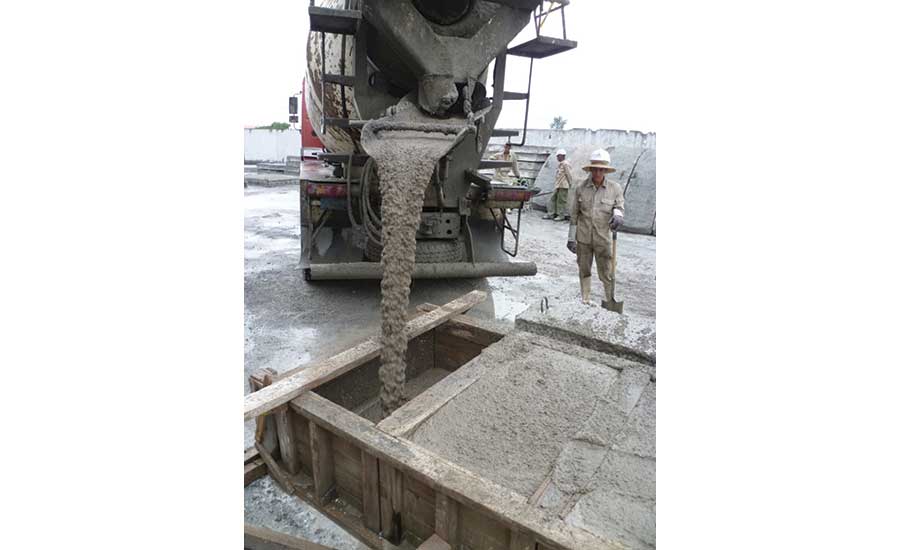Concrete Technology
Low-Carbon Cement Gains Ground in Non-US Markets

LC3 blend properties resemble those of ordinary Portland and also reduce CO2.
PHOTO COURTESY LC3 PROJECT
A new type of low-carbon cement that is based on a blend of limestone and calcined clay is gaining acceptance in developing countries and is expected to be commercially produced next year in South America. It is tolerant of impurities in its components, competitive in performance and economics with ordinary Portland cement and can reduce carbon dioxide emissions by up to 30%.
Limestone Calcined Clay Cement (LC3) has been developed by an international team of researchers coordinated by EPFL (Swiss Federal Institute of Technology at Lausanne), a consortium.
CO2 reduction sets LC3 apart from ordinary Portland, says Steven Kosmatka, vice president for research and technical services at the Portland Cement Association. “Calcined clay systems have been used in the U.S., but they didn’t take off,” he says. Blended cements are “great cements,” he adds, but only about six state departments of transportation accept performance-based cement. Wide U.S. adoption of low-carbon cement would require a change in society to value CO2 reduction more highly, he says.
But outside the U.S., CO2 reduction is a priority. In March, the World Business Council for Sustainable Development issued the Technology Roadmap for Low-Carbon Transition in the Cement Industry. “They forecast by 2050 [calcined-clay and limestone blends] will make up 27% of all cement made in the world,” says Karen Scrivener, director of the Laboratory of Construction Materials at EPFL.
Production of LC3 costs up to 25% less than Portland by reducing the clinker content to 50% or less. Clays compose 30% of the blend, limestone 15% and gypsum the remainder. That process produces 30% less CO2 than ordinary Portland cement. Performance characteristics of LC3 are similar to conventional Portland, Scrivener says, and the blend even outperforms traditional cement in some regards, such as resistance to chloride and alkali–silica reaction.
With 90% of cement demand now coming from developing countries, according to Scrivener, and mitigation of CO2 emissions in the cement industry becoming a must in most countries, LC3 use is a cost-effective, attractive and sustainable alternative to ordinary Portland.
India and Cuba are playing important roles. Three Indian technology institutes and the CIDEM R&D center at a major Cuban university are members of the LC3 project team. Both countries have completed construction projects using the blended cement, demonstrating the ease with which LC3 can be produced and the utility of the product for houses, highway paving and precast components.
The LC3 project is funded by the Swiss Agency for Development and Cooperation and coordinated by the École Polytechnique Fédérale de Lausanne.






